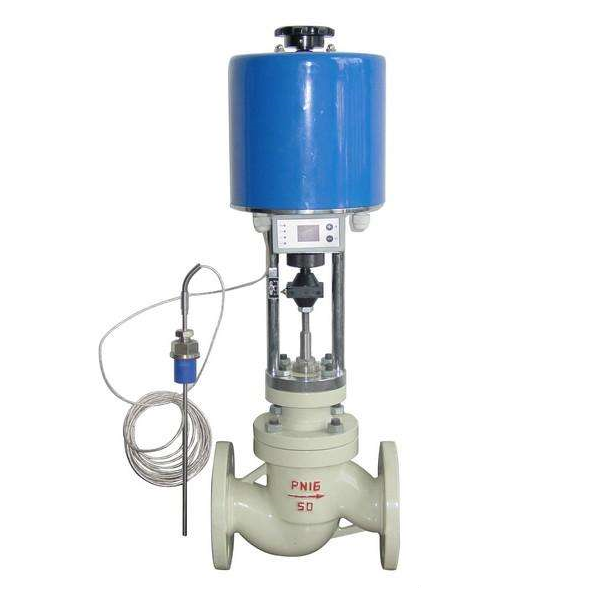
Temperature control valves (TCVs) are crucial components in industrial and process systems, designed to regulate fluid temperatures for optimal performance. These valves are widely used in turbines, compressors, engine jacket water systems, lubrication oil cooling, and other applications that demand precise thermal management. By ensuring temperature stability, TCVs not only enhance system efficiency but also extend the operational life of equipment and improve safety.
This article explores what temperature control valves are, the types available, their applications, and the advantages they offer. Additionally, we’ll delve into maintenance practices and factors to consider when selecting the right valve for your needs.
Temperature control valves serve the critical function of maintaining precise temperature levels in industrial systems. They achieve this by either mixing or diverting fluid flows, allowing for accurate thermal regulation. For instance, in cogeneration systems, TCVs ensure adequate engine cooling while optimizing heat recovery within the heat recovery loop.
These valves are essential in preventing temperature fluctuations that could negatively impact equipment performance or cause damage. From compressors and tank jackets to heating coils and cooling systems, TCVs provide stability and reliability in diverse applications.

Temperature control valves are generally classified into two main categories based on their actuation mechanism:
Self-actuated TCVs operate independently, without requiring an external power source. They rely on thermally sensitive materials, such as wax or bimetallic elements, that expand or contract with temperature changes. This expansion or contraction drives the actuator to adjust the valve position, regulating the flow of thermal fluids.
Key Features of Self-Actuated TCVs:
Energy-Efficient: Since they don’t rely on external power, self-actuated valves are highly energy-efficient and suitable for remote locations.
Cost-Effective: Their mechanical simplicity makes them affordable and reliable.
Fixed Setpoints: These valves are ideal for processes with consistent temperature requirements, as they do not allow for frequent setpoint changes.
Self-actuated TCVs are also referred to as self-operated temperature regulators and are commonly found in simpler systems with stable temperature needs.
Externally actuated TCVs are part of more complex systems that integrate external sensors and Proportional-Integral-Derivative (PID) controllers. These valves require an external power source, such as electricity or compressed air, to function.
In a typical setup, the PID controller continuously monitors the process temperature via a sensor. When the temperature deviates from the desired setpoint, the controller sends a signal to the TCV, adjusting its position to maintain the target temperature.
Key Features of Externally Actuated TCVs:
Precision Control: These valves offer precise regulation, making them suitable for dynamic processes.
Automation-Friendly: They integrate seamlessly with automated control systems for enhanced efficiency.
Versatility: Externally actuated valves are ideal for applications requiring frequent temperature adjustments or varying setpoints.
Temperature control valves are used across a wide range of industries, including:
Regulate cooling fluids to prevent overheating and ensure optimal operation.
Maintain consistent cooling to protect engine components.
Preserve the performance of machinery by keeping lubrication oil at the appropriate temperature.
Ensure accurate temperature control in sensitive manufacturing environments.
Manage thermal conditions in cooking, pasteurization, and refrigeration processes.
Maximize energy recovery and improve system efficiency by maintaining the heat recovery loop.
Provide stable thermal conditions in storage and processing equipment.
Proper temperature regulation minimizes energy consumption, reduces waste, and enhances overall efficiency.
By preventing overheating or extreme thermal variations, TCVs protect equipment from premature wear and tear.
Stable thermal conditions reduce the risk of accidents and ensure the safety of both equipment and personnel.
Self-actuated valves, in particular, offer an energy-efficient solution for remote or standalone systems.
Externally actuated valves facilitate precise control, ensuring optimal performance in complex industrial processes.
Choosing the right TCV for your application involves several considerations:
Assess the operating temperature range, pressure conditions, and type of fluid involved.
Determine whether a self-actuated or externally actuated valve best suits your control needs.
Consider whether an energy-independent valve aligns with your sustainability objectives.
For automated systems, ensure compatibility with existing sensors, controllers, and control loops.
Select a valve with the appropriate dimensions and connection type for your system.
Regular maintenance is crucial to ensure the reliability and performance of TCVs. Here are some key practices:
Check for signs of corrosion, wear, or leakage in the valve body and components.
Inspect seals, gaskets, and actuators for proper functionality.
Verify that the actuator responds accurately to temperature changes or control signals.
Remove any debris, scaling, or sediment buildup from the valve interior.
Apply appropriate lubricants to moving parts to prevent friction and wear.
Periodically calibrate the valve to ensure it maintains the desired temperature setpoint accurately.
Replace worn-out parts such as seals, diaphragms, or springs to prevent failure.
By adhering to these maintenance practices, you can extend the lifespan of your TCVs and maintain optimal system performance.
Temperature control valves are indispensable in modern industrial systems, offering precise and reliable thermal regulation. Whether self-actuated or externally actuated, these valves ensure efficient operations, protect valuable equipment, and promote safety.
From turbines and compressors to cogeneration systems and chemical processes, the versatility and importance of TCVs cannot be overstated. By understanding the types, applications, and maintenance requirements of temperature control valves, industries can make informed decisions to enhance their processes and achieve long-term success.
Investing in high-quality TCVs tailored to your specific needs is a step toward improved efficiency, sustainability, and operational excellence.